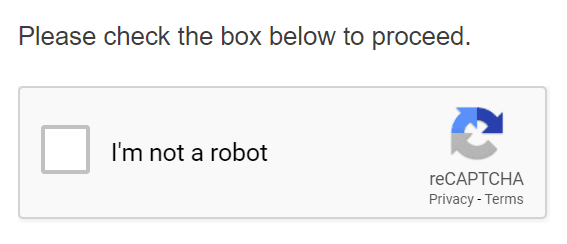CAPTCHA is strategy used to ensure sites against spam. Objective is to prevent intuitive sites from being spammed by sifting through naturally created input.
Abbreviation CAPTCHA means [highlight color=”yellow”]‘Totally Automated Public Turing test to distinguish Computers and Humans’[/highlight]. As from get-go as year 1950, PC researcher Alan Turing proposed technique for testing scholarly limit of computerized reasoning. As indicated by PC pioneer, machine can imitate human brain when it figures out how to banter with individuals in talk without then acknowledging it is PC.
Turing Test went down throughout entire existence of AI (man-made reasoning) research and was first passed by PC program in 2014: As the primary machine on planet, chatterbot Eugene Goostman prevailing with regards to misdirecting in excess of 30 percent of free jury for in any event 5 minutes. Eugene claimed to be Ukrainian young person with guinea pigs, who was likewise major Eminem fan.
What seems like sci-fi, is currently one of central issues on web. Intelligent sites should have option to recognize human site guests from PC programs inside structure of Human Verification. Increasingly more advanced captchas are being intended to help forestall robotized spam and snap robots (bots).
What is reason for CAPTCHA ?
Captchas are generally utilized when web applications require client input. Envision you are running online store and need to offer your clients chance to compose item surveys in remarks segment. For this situation, you need to guarantee that passages are really from your clients or if nothing else from human site guests. You will regularly go over naturally produced spam remarks – in most pessimistic scenario connecting to your opposition.
You can decrease danger of this event by ensuring web structures with captcha, by causing clients to confirm that they are human before they can present their remarks. Captchas are currently found in practically all parts where human clients should be recognized from bots. For instance, this incorporates enrollment structures for email administrations, pamphlets, networks, and interpersonal organizations, just as online studies or web administrations, for example, web search tool administrations.
After some time, different techniques have been created to do Human Verification. On basic level, be that as it may, no settled system offers 100% assurance against spam and captcha innovation is frequently connected with diminished ease of use.
What sort of CAPTCHAs are there ?
Idea of captcha depends on presumption that, notwithstanding quick advances in AI research, there are still contrasts between intellectual abilities of individual and those of PC program. Each captcha, along these lines, needs to introduce errand that is simple for human clients to illuminate, however not machines.
A popular example of captcha is nocaptcha from reCAPTCHA. Others include sound-based captchas, math problems, image selection, etc.
The most effective and easiest method to add CAPTCHA :
Whichever CAPTCHA you choose to utilizes , code pieces are generally given by CAPTCHA supplier. CAPTCHA specialist organization can regularly be configured to just show CAPTCHA codes that you support,d your email address will be utilise for warnings. You should drop code pieces into fitting pieces of your website, on those forms where CAPTCHA window ought to show up.
Generally, integrating CAPTCHA is moderately simple. For instance, code for integrating ReCAPTCHA is incorporated underneath (from ReCAPTCHA docs) :
<html>
<head>
<title>reCAPTCHA demo: Sample page</title>
<script src="https://www.google.com/reCAPTCHA/api.js" async defer></script>
</head>
<body>
<form action="?" method="POST">
<div class="g-reCAPTCHA" data-sitekey="your_site_key"></div>
<br/>
<input type="submit" value="Submit">
</form>
</body>
</html>



